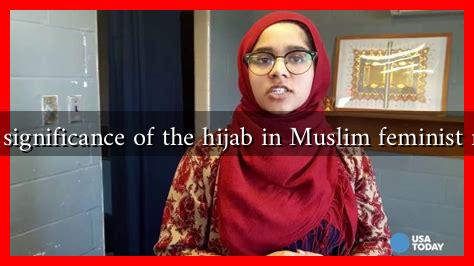-
Table of Contents
What is the Significance of the Hijab in Muslim Feminist Movements?
The hijab, a traditional headscarf worn by many Muslim women, has become a symbol of empowerment, identity, and resistance within various feminist movements across the globe. While often viewed through the lens of oppression, the hijab can also represent autonomy and a reclaiming of agency for many women. This article explores the multifaceted significance of the hijab in Muslim feminist movements, highlighting its role in challenging stereotypes, promoting self-expression, and fostering community solidarity.
The Hijab as a Symbol of Empowerment
For many Muslim women, wearing the hijab is a personal choice that signifies empowerment rather than oppression. This perspective is crucial in understanding the hijab’s role in feminist movements. Here are some key points to consider:
- Personal Agency: Many women choose to wear the hijab as an expression of their faith and identity. This choice can be seen as an assertion of personal agency, allowing women to define their own relationship with their religion.
- Reclaiming Identity: In a world where Muslim women often face discrimination and stereotyping, the hijab serves as a means of reclaiming their identity. It allows them to challenge the narratives imposed upon them by society.
- Resistance to Western Norms: The hijab can also be a form of resistance against Western beauty standards and norms. By choosing to wear the hijab, women assert their right to define beauty on their own terms.
Challenging Stereotypes and Misconceptions
The hijab has often been misrepresented in media and popular culture, leading to a plethora of stereotypes about Muslim women. Feminist movements within the Muslim community actively work to challenge these misconceptions:
- Media Representation: Muslim feminists advocate for more accurate representations of hijab-wearing women in media, emphasizing their diverse experiences and contributions to society.
- Education and Awareness: Initiatives aimed at educating non-Muslims about the hijab and its significance help dismantle stereotypes. For instance, campaigns like “World Hijab Day” encourage women of all backgrounds to experience wearing the hijab, fostering empathy and understanding.
- Intersectionality: Muslim feminists highlight the importance of intersectionality, recognizing that the experiences of hijab-wearing women are shaped by various factors, including race, class, and nationality.
Case Studies: The Hijab in Action
Several case studies illustrate the significance of the hijab in feminist movements:
- Malala Yousafzai: The Nobel Prize-winning activist has often been seen wearing a hijab. Her choice symbolizes her commitment to education for girls in Pakistan and serves as a powerful statement against oppression.
- Linda Sarsour: A prominent activist in the Women’s March, Sarsour uses her platform to advocate for Muslim women’s rights, often highlighting the hijab as a symbol of resistance against Islamophobia.
- Muslim Women’s Collective: This organization works to empower Muslim women through education and community engagement, promoting the hijab as a choice that should be respected and celebrated.
The Global Perspective
The significance of the hijab transcends geographical boundaries. In various countries, the hijab has become a focal point for discussions about women’s rights and religious freedom:
- France: The ban on hijabs in public schools has sparked debates about secularism and religious freedom, with many Muslim feminists arguing that the ban infringes on personal choice.
- Iran: The hijab is mandatory in Iran, leading to protests and movements advocating for women’s rights and freedom of choice, showcasing the hijab as a symbol of resistance against state-imposed norms.
- United States: In the U.S., Muslim women have used the hijab to challenge stereotypes and advocate for civil rights, often participating in broader feminist movements.
Conclusion
The hijab holds significant meaning within Muslim feminist movements, serving as a symbol of empowerment, identity, and resistance. By challenging stereotypes and advocating for personal agency, Muslim women are redefining the narrative surrounding the hijab. As these movements continue to grow, it is essential to recognize the diverse experiences of hijab-wearing women and support their right to choose how they express their identity. The hijab is not merely a piece of clothing; it is a powerful statement of autonomy and resilience in the face of societal challenges.
For further reading on this topic, you can explore resources such as HuffPost’s article on Hijab and Feminism.

